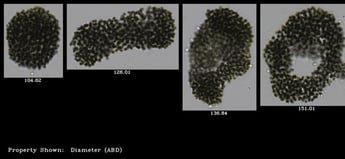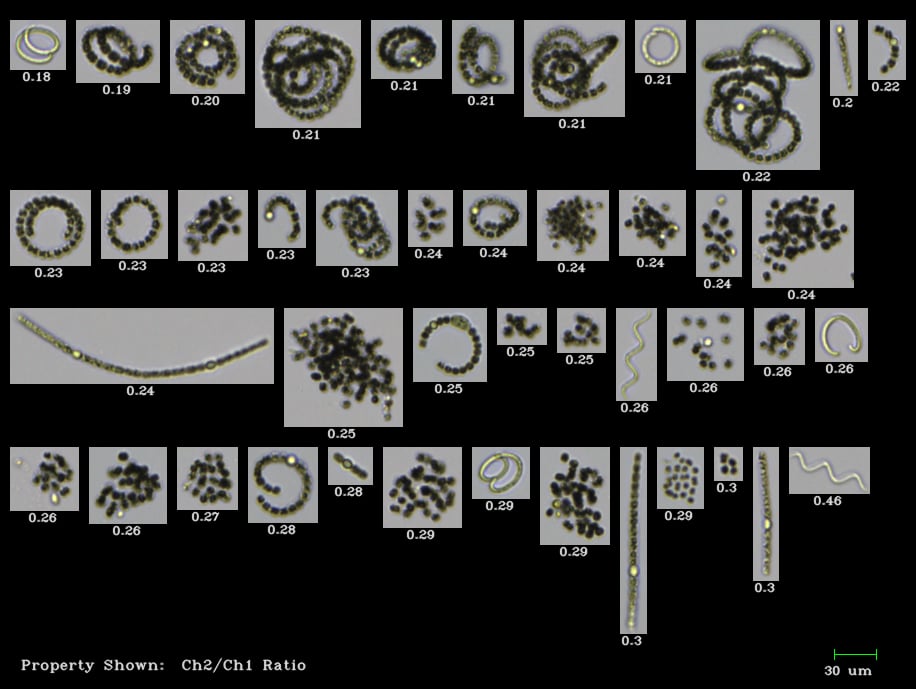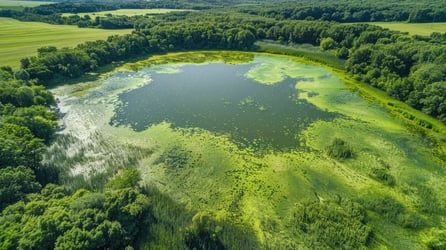This past summer in June, The Gaffney Board of Public Works (GBPW), in South Carolina, issued a water quality advisement and posted signs around Lake Welchel in Cherokee County. An algal bloom on a portion of the lake exceeded the state’s water quality standards for Microcystis, a type of toxic cyanobacteria.

.jpg?width=356&name=Lyngbya%20(002).jpg)
Pictured above, Microcystis (left) and Lyngbya (right) as imaged by FlowCam.
Additionally, the GBPW is monitoring Lake Wateree, where an extensive bloom of Lyngbya wollei was spotted in several areas. There are no present issues with exceeding the State Algal Toxin standards in this other lake because the presence of toxin-producing cyanobacteria does not always correlate to the presence of cyanotoxins.
The increased bloom activity motivated the GBPW to explore options to bring water quality testing in-house, versus using an outside lab to analyze water samples. They decided to implement a proactive water quality monitoring effort that will rely upon routine, FlowCam monitoring to identify and predict algal blooms in their early stages before they can become public safety issues. They do this by tracking trends in algae populations and developing trigger levels from which to implement treatment strategies.
The GBPW has extensive plans to build FlowCam image libraries and filters over the winter. This will enable them to quickly and easily review water samples and automate identification. Their new FlowCam will provide them with in-house testing capabilities and same-day results to track populations of known cyanotoxin producers as well as taste and odor producers. Having these image libraries ready to go by next summer will streamline their classification process and help keep the lakes free from toxic cyanobacteria.
They first learned about FlowCam from colleagues at Startex-Jackson-Wellford-Duncan Water District (SJWD) who are also in South Carolina. SJWD has been using FlowCam since 2019.











